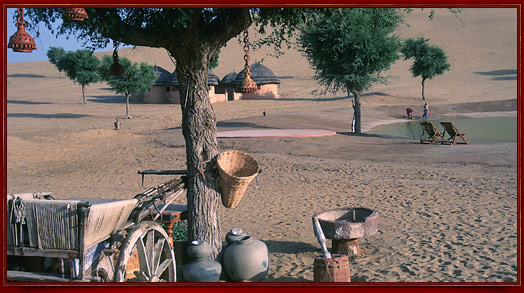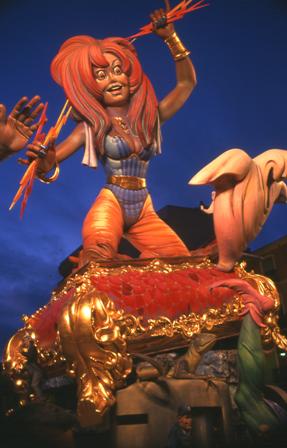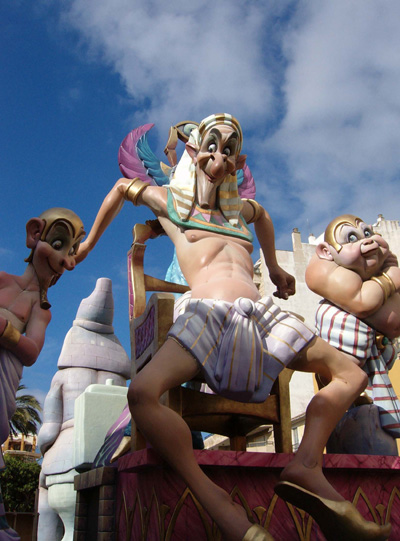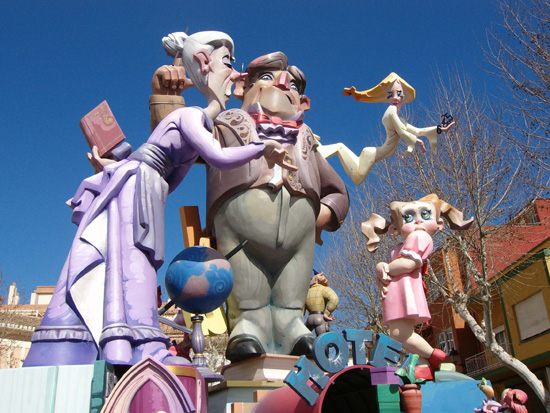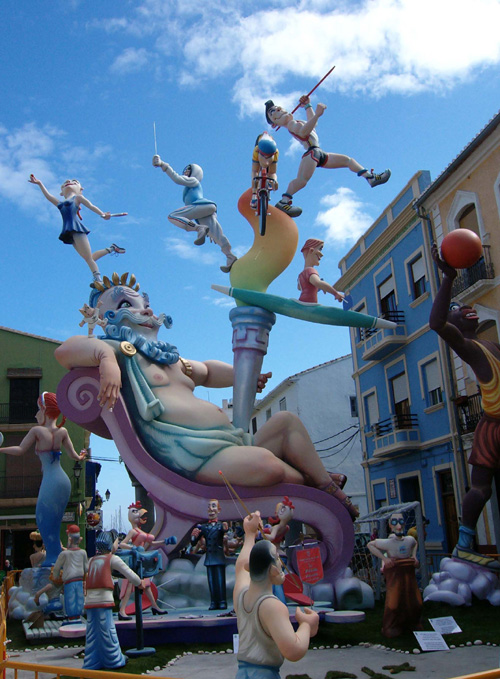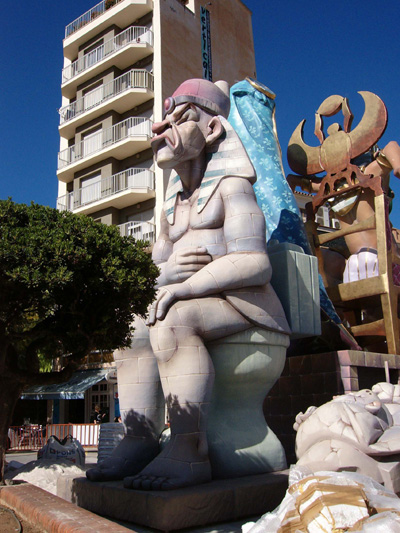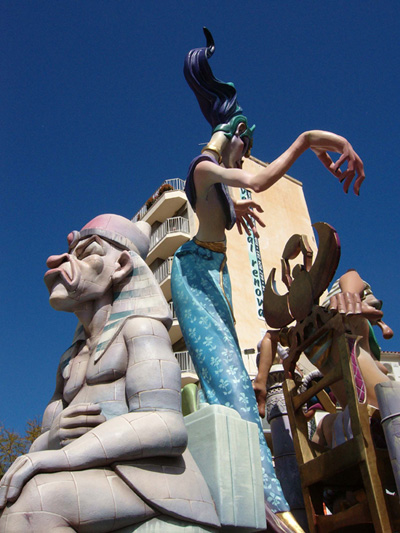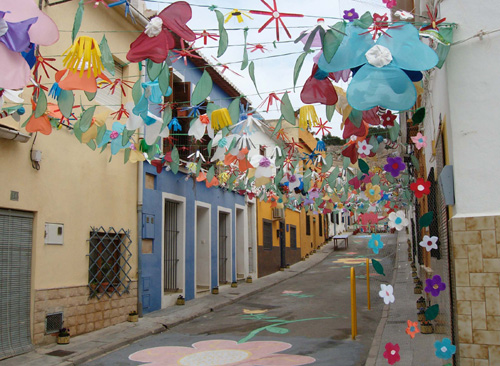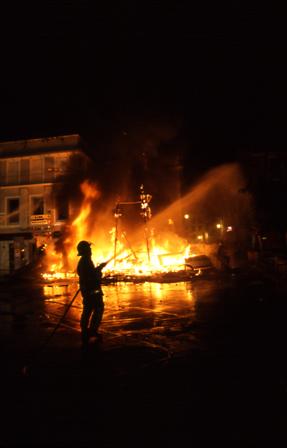Long Live The Fallas
The coming of spring on the Mediterranean coast brings the sweet scent of thousands of flowers and blossoming orchards as well as the melodious sound of twittering birds. It is a time of gentle thoughts of love and the not so gentle explosion of gunpowder blasting you from your snug bed at the crack of dawn. It must be the time for Las Fallas!
For one week in March, the entire province of Valencia turns into a giant carnival giving in to its most primal urges and celebrates the secret of fire. As a pagan ritual originating in ancient Mediterranean culture and brought to our shores in remote times, this is arguably one of our most colourful and exciting festivals.
Over eighty towns reverberate to an almost continuous cacophony of firecrackers, marching bands and beautifully dressed “Falleros�. But the best part of all is the giant cartoon-like effigies, some 30 feet tall, that are specially built at an enormous cost for the celebration. These are wedged into the smallest of cross-roads, only to be set alight on the night of 19th March.
‘La desperta’ occurs every morning during Fallas Week (March 12-19) and consists of hand thrown bangers and rockets. Just when you think that particular bit of morning madness has died down the first of hundreds of bands start parading through the streets playing their hearts out in a repertoire of pasodobles and marches.
The noisiest part of Fallas Week by far is the mascleta, a pirotechnical display of sound beyond comparison. Most neighbourhoods set off a mascleta around midday but just once in a lifetime one should experience the 2 o’clock mascleta set off in Valencia in the Town Hall Square. Every day during Fallas Week nearby offices are temporarily deserted, the birds disappear and thousands of people jam so tightly into the streets near the Town Hall that movement is impossible. Then, in a matter of ten minutes of solid explosion, up to one hundred kilos of gunpowder is exploded. The display finishes with a twenty-second grand finale that could possibly loosen the gold fillings in your teeth.
The Mascleta is only a prelude to further fireworks displays that are staged at every conceivable opportunity. Each individual town competes in the grand fireworks stakes and many are spectacular. However, the most famous night of fireworks, ‘Nit De Foc’, is held on San Jose’s Eve, 18th of March, along the ancient riverbed of Valencia’s Turia River. On that night an extraordinary display called a castillo (castle) is performed in which 2,500 kilos of pirotechnical material are ignited. This produces not only a magnitude of sound but also carefully choreographed flashing lights that explode in the shapes of sparkling flowers, enormous palm trees and dozens of other colourful contrivances that shimmer and glisten across the black March sky.
The culmination of the Fallas celebration is on the night of March 19. For most people it is difficult to understand that an entire year’s work, for thousands of people, costing hundreds of thousands of dollars can all be purposely devoured by flames in one evening. But that is missing the point. The Fallas were created to be burned in this moment, washing away winter worries in a tribute to spring. Before the burning it was just another project, albeit an enormous one. The burning, on the other hand, releases the true meaning. When the effigies begin to disappear beneath the ashes it means that they and all the satirical and critical meaning that they represented are purged.
The cremas are staggered starting from 10PM when the children’s fallas are burned. Next those not winning prizes, then in reverse order from 3rd to the 1st place winner. Each town will have their own schedule for burning but it is easy to follow the pattern. Huge strings of fireworks and rockets are strategically placed and parts of the main statue are broken open to allow more fireworks inside. Nearby stores and houses are draped in fireproof ‘blankets’ and the entire surrounding area kept under close watch by local firemen who keep a constant flow of water on property that might be in danger.
When the fuse is ignited the crowd is silenced, first by the anticipated act of lighting then by the initial scream of fireworks blasting from every crevice of the structure. The noise is deafening. At first only small bits of the falla actually take fire then with amazing speed the entire statue is consumed. The intensity of the heat is unlike anything else. Just as the main body of the falla is licked with flames the crowds cheer and toast the spring. It all seems to end in the blink of an eye when the structure literally implodes and falls to the street with a fierce swooshing noise. By morning even the ashes will have been swept away and a new Falla year begins.  Â
